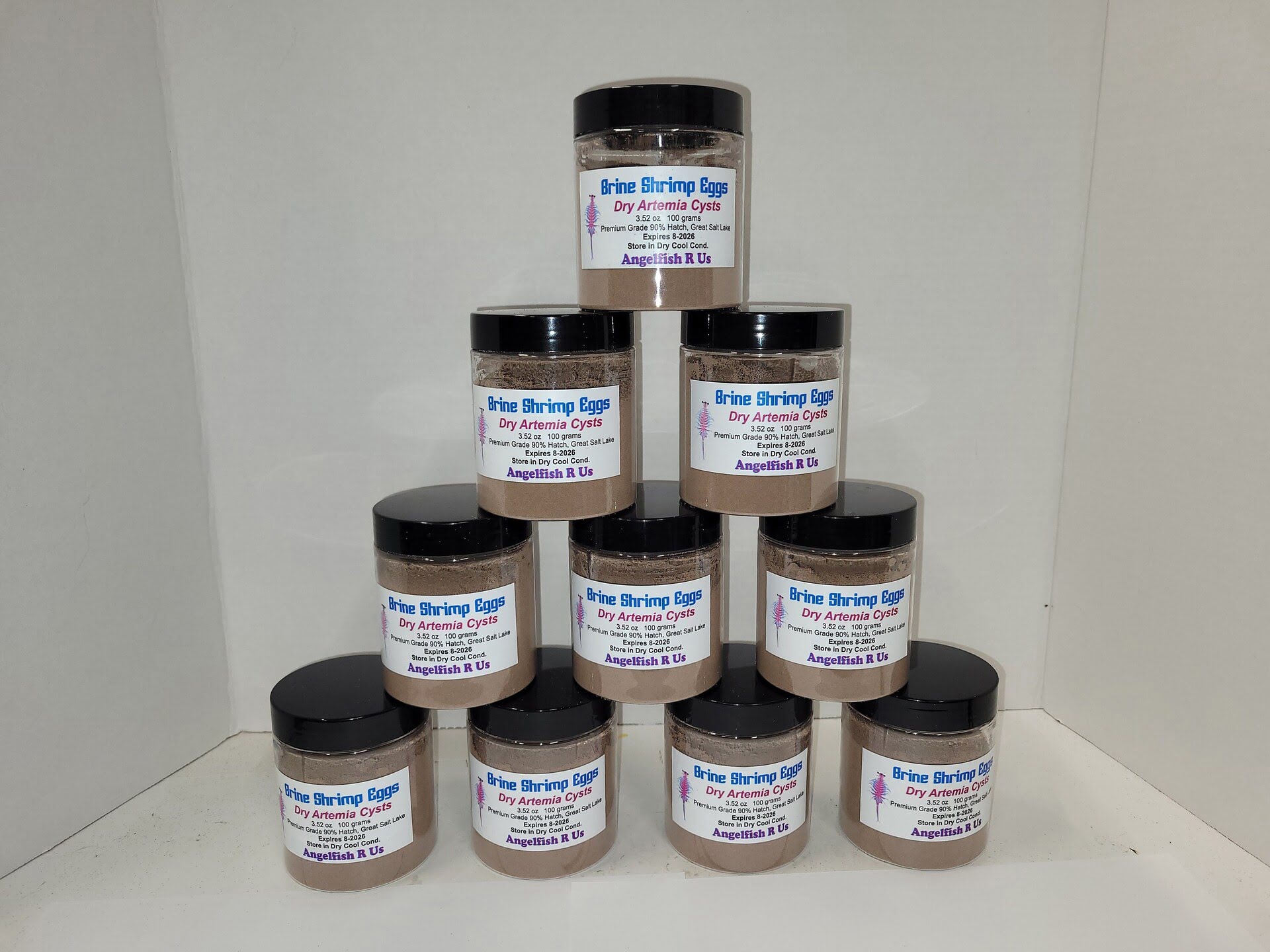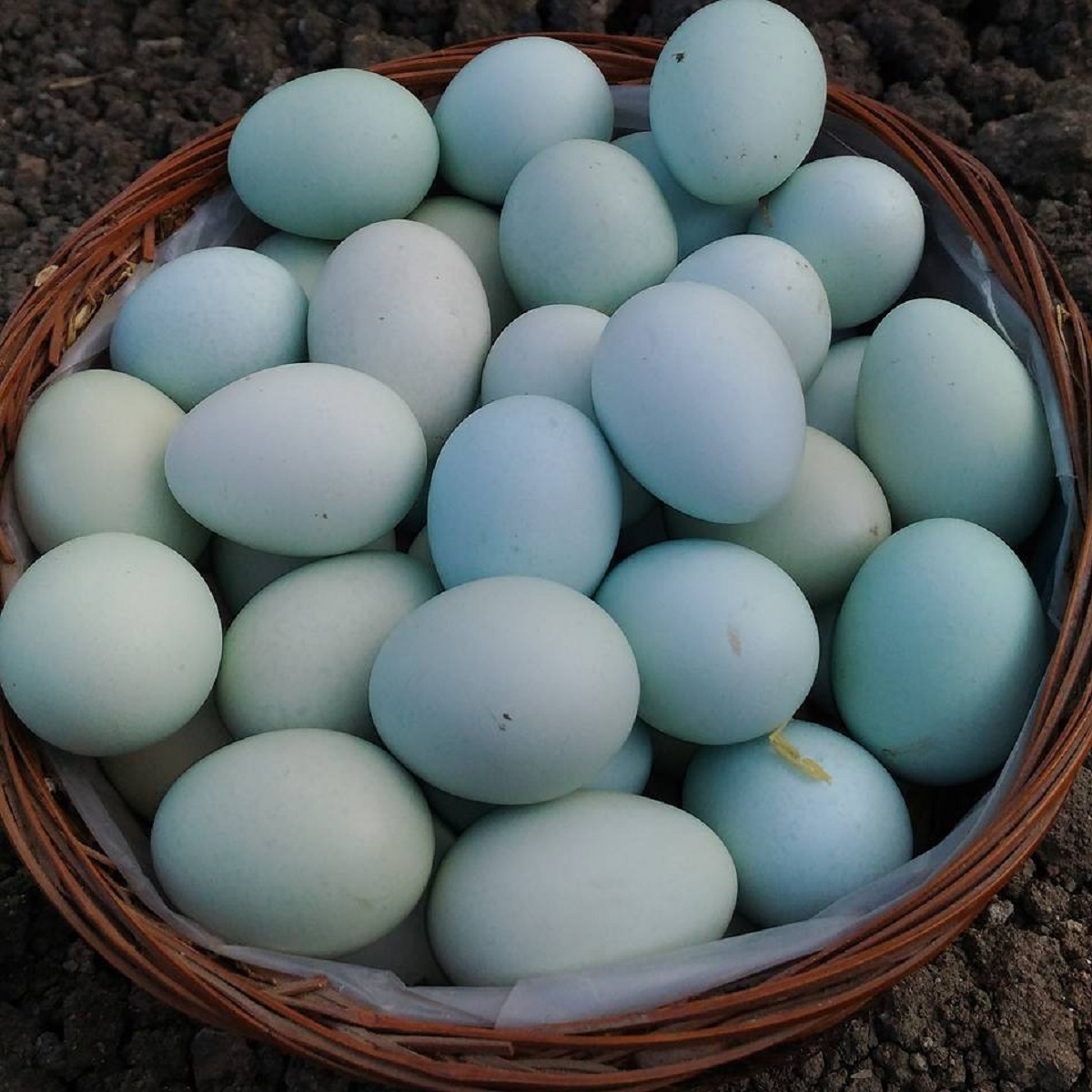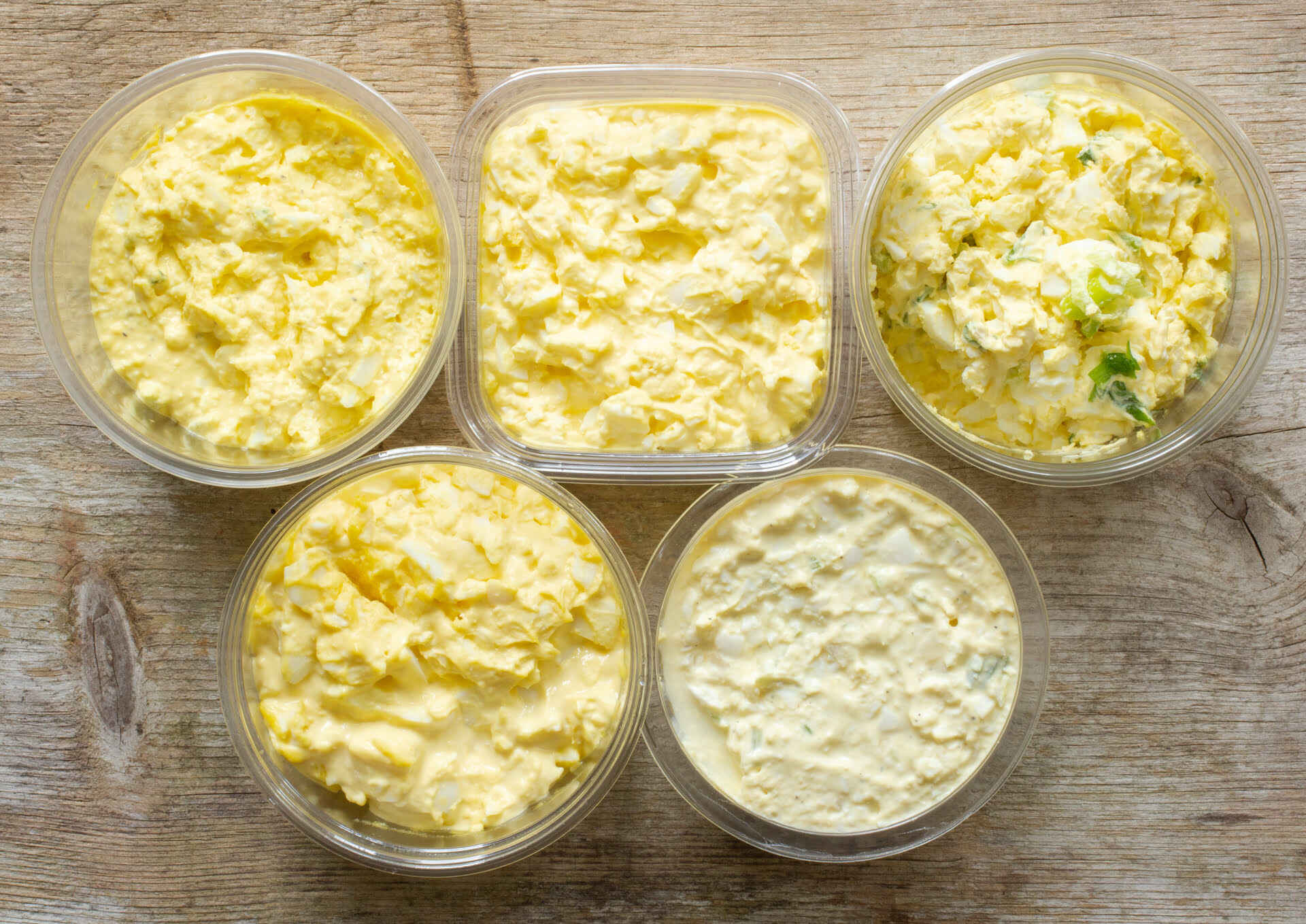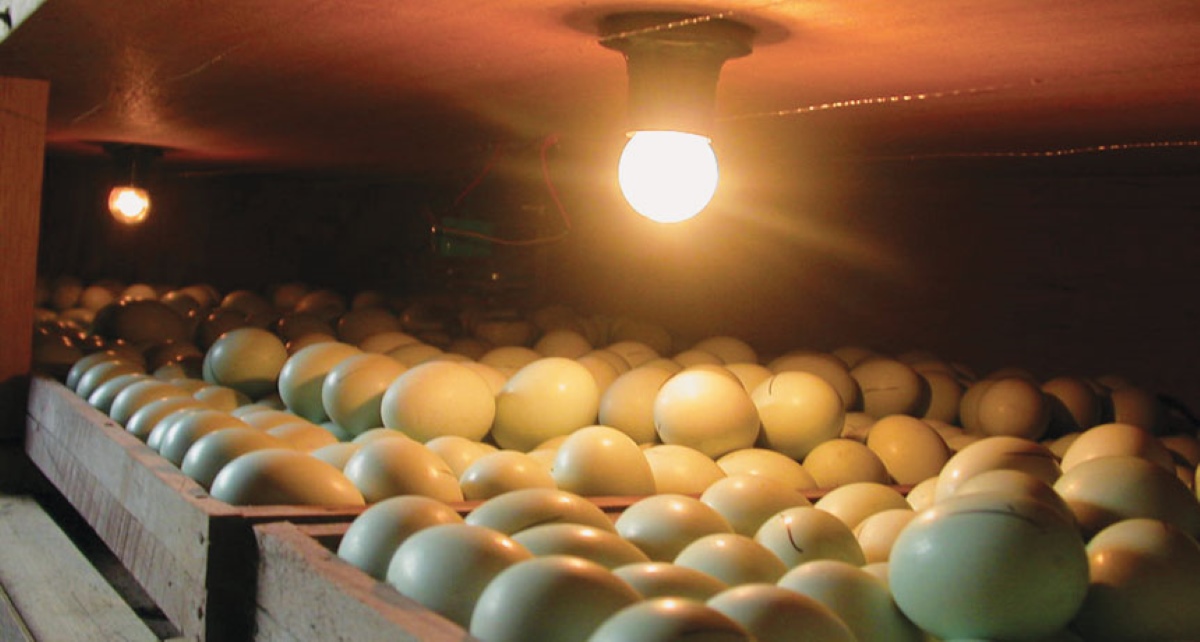

Articles
How To Store Brine Shrimp Eggs
Modified: January 19, 2024
Learn the best way to store brine shrimp eggs in this helpful article. Discover useful tips and tricks for preserving and maximizing their viability.
(Many of the links in this article redirect to a specific reviewed product. Your purchase of these products through affiliate links helps to generate commission for Storables.com, at no extra cost. Learn more)
Introduction
Welcome to the fascinating world of brine shrimp eggs and their proper storage! Brine shrimp eggs, also known as Artemia cysts, are commonly used as a source of nutrition for aquatic organisms. Whether you are a hobbyist fish keeper or a breeder, understanding how to store brine shrimp eggs is crucial to maintain their viability and quality. In this article, we will delve into the intricacies of brine shrimp egg storage and provide you with valuable tips and information.
Brine shrimp eggs are highly resilient, capable of surviving harsh environmental conditions for an extended period. However, to maximize their hatching success and ensure their longevity, proper storage is essential. Several factors, including the storage containers, temperature, humidity, and duration, play a significant role in maintaining the viability of brine shrimp eggs.
In this guide, we will discuss the importance of understanding brine shrimp eggs and the factors that affect their storage. We will also explore the proper storage containers, temperature and humidity considerations, the shelf life of brine shrimp eggs, steps for storing them effectively, and tips to monitor their viability. Lastly, we will troubleshoot common issues that arise during brine shrimp egg storage.
So, whether you are a newcomer to the world of brine shrimp eggs or an experienced aquarist looking to fine-tune your storage techniques, let’s dive in and uncover the secrets of storing brine shrimp eggs!
Key Takeaways:
- Proper storage of brine shrimp eggs is crucial for maintaining their viability. Choose the right containers, control temperature and humidity, and monitor viability to ensure successful hatching.
- Troubleshoot common issues such as mold growth, premature hatching, and low hatch rates to maintain the quality of brine shrimp eggs. Regular monitoring and proper handling are key to successful storage.
Read more: How To Store Shrimp
Understanding Brine Shrimp Eggs
Brine shrimp eggs, scientifically known as Artemia cysts, are the dormant stage of a small crustacean species called Artemia. These tiny eggs hold incredible potential, as they have the ability to hatch into live brine shrimp, which serve as a nutritious food source for many aquatic organisms.
Brine shrimp eggs are well-known for their exceptional adaptability and resilience. They possess a unique protective outer shell, or cyst, which enables them to survive austere environments, such as deserts and salt flats, where their natural habitat is often found. Within this cyst, all the necessary nutrients and genetic material are stored, allowing the brine shrimp to remain dormant until favorable conditions for hatching are present.
One of the remarkable characteristics of brine shrimp eggs is their ability to withstand extreme temperatures, salinity levels, and long periods of desiccation. This resilience is due to the presence of a high concentration of trehalose, a sugar molecule that protects the embryo during its dormant state.
Brine shrimp eggs are an integral component of the aquaculture industry, as they provide a convenient and nutrient-rich food source for fish larvae, shrimp, and other aquatic organisms. They are also commonly used in aquariums as a supplemental food or as live prey for certain fish species.
Before storing brine shrimp eggs, it is crucial to understand their quality and viability. High-quality brine shrimp eggs should have a high hatching rate, ensuring that a significant proportion of the eggs will successfully hatch into live brine shrimp. Poor-quality eggs may have a lower hatching rate and may contain a higher percentage of unhatched or dead eggs. It is advisable to purchase brine shrimp eggs from reputable suppliers known for their high-quality products.
By comprehending the unique nature of brine shrimp eggs and their ability to survive unfavorable conditions, you can better appreciate the importance of providing optimal storage conditions to ensure their long-term viability. Let’s explore the factors that affect brine shrimp egg storage in the next section.
Factors Affecting Brine Shrimp Egg Storage
Several factors can significantly impact the storage of brine shrimp eggs. By understanding these factors, you can ensure that you provide the ideal conditions for preserving the viability and quality of the eggs. Let’s explore the key factors that affect brine shrimp egg storage:
1. Moisture:
Excessive moisture can be detrimental to the viability of brine shrimp eggs. High humidity levels can cause the eggs to absorb moisture, leading to premature hatching or the formation of mold and bacteria. It is essential to store brine shrimp eggs in a dry environment and minimize exposure to moisture.
2. Oxygen:
Brine shrimp eggs require a sufficient supply of oxygen to maintain their viability. Proper airflow in the storage containers is crucial to prevent the buildup of carbon dioxide and ensure an adequate oxygen supply for the eggs. Avoid tightly sealing the storage containers to allow for proper air exchange.
Read more: How To Store Fresh Shrimp
3. Temperature:
The temperature at which brine shrimp eggs are stored can have a significant impact on their viability. The recommended temperature range for storing brine shrimp eggs is typically between 0°C and 4°C (32°F and 39°F). This cool temperature helps to prolong the dormancy of the eggs and prevent premature hatching.
4. Light:
Exposure to light can stimulate the hatching process in brine shrimp eggs. It is important to store the eggs in opaque or dark-colored containers to shield them from light. This helps to maintain their dormant state and preserve their viability until you are ready to hatch them.
5. Contamination:
Brine shrimp eggs are susceptible to contamination from molds, bacteria, and other microorganisms. It is crucial to ensure that the storage containers and the surrounding environment are clean and free from any contaminants. Regularly sanitize the containers and handle the eggs with clean hands or tools.
6. Storage Duration:
The length of time brine shrimp eggs are stored can also impact their viability. While brine shrimp eggs have a long shelf life, it is best to use them within their recommended expiration date for optimal hatching success. As time passes, the hatching rate of the eggs may decrease.
By taking into account these factors when storing brine shrimp eggs, you can create an environment that maximizes their viability and ensures their quality. In the next section, we will explore the proper storage containers for brine shrimp eggs.
Read more: How To Store Shrimp In Fridge
Proper Storage Containers for Brine Shrimp Eggs
Choosing the right storage containers for brine shrimp eggs is crucial in maintaining their viability and quality. The ideal container should provide protection from moisture, light, and contaminants, while allowing for proper airflow. Here are some options for proper storage containers:
1. Airtight Plastic Containers:
Airtight plastic containers, such as food-grade containers with a secure lid, are a popular choice for storing brine shrimp eggs. These containers provide excellent protection against moisture, light, and contamination. Make sure to choose containers that are opaque or dark in color to block out light and maintain the eggs’ dormant state.
2. Glass Jars:
Glass jars with tight-fitting lids can also be suitable for storing brine shrimp eggs. They offer airtight protection and are easy to clean and sanitize. Similar to plastic containers, opt for dark-colored glass jars to prevent light exposure.
3. Vacuum-Sealed Bags:
Vacuum-sealed bags provide an effective barrier against moisture, air, and light. They can help prolong the shelf life of brine shrimp eggs by creating a vacuum-sealed environment. Ensure that the bags are made of a durable material that will not puncture easily.
4. Mylar Bags:
Mylar bags, made of a polyester film, are excellent for long-term storage of brine shrimp eggs. These bags are moisture-resistant, light-blocking, and provide a protective barrier against contaminants. Mylar bags with a resealable zipper closure are a convenient option for easy access to the eggs.
5. Tin Cans:
Tin cans, similar to those used for storing food, can also be used to store brine shrimp eggs. They offer protection from light, moisture, and contaminants. Ensure that the tin cans have a tight-sealing lid to maintain an airtight environment.
When selecting a storage container, it is important to consider its size. Choose a container that allows for some air space, as overcrowding the eggs can lead to excessive moisture buildup. Additionally, label your containers with the date of purchase or expiration date to keep track of the egg’s freshness.
Remember, regardless of the type of container used, proper handling and storage practices are essential to maintaining the viability and quality of the brine shrimp eggs. In the next section, we will explore temperature and humidity considerations for brine shrimp egg storage.
Temperature and Humidity Considerations
Proper temperature and humidity play a crucial role in the storage of brine shrimp eggs. Maintaining the correct conditions helps to preserve their viability and prevent premature hatching. Let’s explore the temperature and humidity considerations for storing brine shrimp eggs:
Temperature:
The recommended temperature range for storing brine shrimp eggs is typically between 0°C and 4°C (32°F and 39°F). Storing the eggs at a cool temperature helps to maintain their dormancy and prolong their viability. A refrigerator is an excellent choice for storing brine shrimp eggs, as it provides a consistently cool environment.
It is important to note that extreme temperatures should be avoided. Freezing temperatures below 0°C (32°F) can damage the eggs, while temperatures above 10°C (50°F) may shorten their shelf life. Ensure that the storage area is away from heat sources, direct sunlight, and fluctuations in temperature.
Read more: How To Store Peeled Shrimp Overnight
Humidity:
Humidity levels must be kept low during brine shrimp egg storage to prevent moisture absorption and premature hatching. Excessive humidity can lead to the eggs becoming non-viable or developing mold and bacterial growth. Aim for a humidity level below 50% to maintain optimum conditions.
If the surrounding environment is naturally humid, using a moisture-absorbing desiccant, such as silica gel packs, can help reduce moisture levels inside the storage container. Place the desiccant in a separate pouch or container to avoid direct contact with the brine shrimp eggs.
Monitoring:
Regular monitoring of the temperature and humidity in the storage area is essential to ensure the optimal conditions for brine shrimp eggs. Use a thermometer and a hygrometer to accurately measure and monitor the temperature and humidity levels. Make adjustments as necessary to maintain the recommended range.
Remember to avoid sudden temperature changes or exposing the eggs to high humidity levels during storage. Consistency in temperature and humidity is key to preserving the viability of the brine shrimp eggs.
By carefully considering the temperature and humidity factors in brine shrimp egg storage, you can provide the ideal conditions for their long-term viability. In the next section, we will explore the duration and shelf life of brine shrimp eggs.
Duration and Shelf Life of Brine Shrimp Eggs
Brine shrimp eggs have a relatively long shelf life, but their viability can decrease over time. Understanding the duration for which brine shrimp eggs can be stored and their shelf life is important to ensure successful hatching. Let’s explore the duration and shelf life considerations for brine shrimp eggs:
Shelf Life:
Brine shrimp eggs typically have a shelf life of 1 to 2 years, depending on the quality of the eggs and storage conditions. High-quality eggs that have been properly stored can maintain their viability for up to 2 years. It is advisable to purchase fresh eggs from reputable suppliers to ensure the highest quality and longest shelf life.
However, it is important to note that as time passes, the hatching rate of the eggs may decrease. It is best to use the eggs within their recommended expiration date for optimal hatching success. Be sure to check the packaging or consult with the supplier for specific guidelines on shelf life.
Read more: How To Store Egg
Storage Duration:
While brine shrimp eggs can be stored for an extended period, it is recommended to use them within a reasonable timeframe to maximize hatching success. The longer the eggs are stored, the higher the chance of a decrease in viability. It is advisable to hatch the eggs within 6 to 12 months of their purchase or by the expiration date stated on the packaging.
Proper storage conditions, including temperature, humidity, and protection from light and contaminants, play a crucial role in maintaining the eggs’ viability during storage. Keep track of the duration for which the eggs have been stored, and use older eggs first to ensure the best hatching results.
Viability Testing:
To assess the viability of brine shrimp eggs before hatching, you can perform a simple viability test. Take a small sample of the eggs and place them in a container with water. If the majority of the eggs hatch within 24 to 48 hours, it indicates high viability. However, if only a small percentage of the eggs hatch, it suggests lower viability, and it may be necessary to obtain fresh or higher-quality eggs.
By understanding the duration and shelf life of brine shrimp eggs, you can effectively manage their storage and ensure optimal hatching success. In the next section, we will explore the steps for properly storing brine shrimp eggs.
Steps for Storing Brine Shrimp Eggs
Proper storage of brine shrimp eggs is essential to maintain their viability and quality. Follow these steps to store brine shrimp eggs effectively:
1. Choose the Right Container:
Select a suitable storage container that provides protection from moisture, light, and contaminants. Airtight plastic containers, glass jars with tight lids, vacuum-sealed bags, or mylar bags can be ideal choices. Ensure the containers are clean and opaque or dark-colored to block out light.
Read more: How To Store Raw Shrimp
2. Clean and Dry the Containers:
Thoroughly clean and dry the storage containers before placing the brine shrimp eggs inside. This helps prevent any potential contamination that could affect the eggs’ viability.
3. Add Brine Shrimp Eggs to the Container:
Gently pour the brine shrimp eggs into the storage container. Avoid overcrowding the eggs to allow proper airflow and minimize moisture buildup.
4. Seal the Container:
Close the container securely to create an airtight environment. Make sure the lid or seal is tight to prevent moisture, air, and light from entering the container.
5. Store in the Refrigerator:
Place the sealed container of brine shrimp eggs in the refrigerator. The recommended temperature range for storage is typically between 0°C and 4°C (32°F and 39°F). Avoid storing the eggs in the freezer, as extremely low temperatures can damage them.
Read more: How To Store Shrimp In Freezer
6. Monitor Temperature and Humidity:
Regularly monitor the temperature and humidity inside the storage area to ensure they remain within the recommended range. Use a thermometer and hygrometer to accurately measure and maintain the optimal conditions.
7. Check for Contamination:
Periodically inspect the stored brine shrimp eggs for any signs of mold, bacterial growth, or contamination. If any issues are detected, remove the affected eggs immediately to prevent damage to the remaining eggs.
8. Label and Track:
Label the storage container with the date of purchase or expiration date of the brine shrimp eggs. This helps you keep track of the duration for which the eggs have been stored and ensures that you use the older eggs first.
9. Handle with Care:
When handling the brine shrimp eggs, always use clean hands or sanitized tools to minimize the risk of contamination. Avoid harsh handling or shaking of the container, as this can damage the eggs.
Following these steps will help ensure that your brine shrimp eggs are stored properly, maintaining their viability and quality until you are ready to hatch them. In the next section, we will explore how to monitor the viability of the brine shrimp eggs.
Read more: How To Store Thawed Shrimp
Monitoring Egg Viability
Monitoring the viability of brine shrimp eggs is crucial to ensure successful hatching and maximize their potential as a food source for aquatic organisms. Here are some methods for monitoring the viability of brine shrimp eggs:
1. Viability Tests:
Performing viability tests can provide insight into the hatching success of the brine shrimp eggs. Take a small sample of the eggs and place them in a container filled with water. Observe the eggs over a period of 24 to 48 hours, looking for signs of hatching. If the majority of the eggs hatch into live brine shrimp, it indicates high viability. Conversely, a low hatching rate may indicate lower viability, and it may be necessary to acquire fresher or higher-quality eggs.
2. Visual Inspection:
Regularly inspect the brine shrimp eggs for any visible changes or abnormalities. Healthy eggs should have a smooth and intact outer shell. Any discoloration, mold growth, or foul odors may indicate contamination or deteriorating viability. Remove any suspect eggs from the storage container to prevent the spread of contaminants.
3. Hatch Rates:
When hatching brine shrimp eggs, keeping track of the hatch rates can provide valuable information about the viability of the eggs. Measure the proportion of eggs that successfully hatch into live brine shrimp. Higher hatch rates indicate higher viability, while lower hatch rates may signify lower viability. Comparing hatch rates over time can help identify any changes in the viability of the eggs.
Read more: How To Store Cooked Shrimp
4. Observing Hatch Time:
Monitor the time it takes for the brine shrimp eggs to hatch after introduction to the hatching environment. Healthy eggs should hatch within the expected timeframe, typically 24 to 48 hours. A prolonged hatch time or a delayed hatching process may indicate lower viability or unfavorable storage conditions. Adjusting the storage conditions or considering fresher eggs may be necessary in such cases.
5. Supplier Reputation:
Choosing a reputable supplier known for providing high-quality brine shrimp eggs can significantly increase the likelihood of obtaining eggs with high viability. Research and gather recommendations from experienced aquarists or aquaculture professionals to find suppliers with a track record of supplying viable eggs.
By diligently monitoring the viability of brine shrimp eggs, you can ensure that you are using high-quality eggs and maximize the success rate of hatching. In the next section, we will discuss common issues that can arise during brine shrimp egg storage and how to troubleshoot them.
Troubleshooting Common Issues
While proper storage techniques can help maintain the viability of brine shrimp eggs, some common issues may arise during the storage process. Understanding these issues and knowing how to troubleshoot them can help ensure the best possible outcome. Here are some common issues that may occur and possible solutions:
1. Mold or Bacterial Growth:
If you notice mold or bacterial growth on the brine shrimp eggs, it indicates contamination. Remove the affected eggs immediately to prevent the spread of mold or bacteria. Check for any potential sources of contamination in the storage area, such as excessive moisture or poor sanitation. Adjust the storage conditions to minimize moisture and ensure a clean environment.
Read more: How To Store Eggs
2. Premature Hatching:
If the brine shrimp eggs hatch before the desired time, it may be due to exposure to higher temperatures or excessive moisture. Check the storage temperature and humidity levels, ensuring that they remain within the recommended range. If necessary, adjust the environmental conditions and promptly transfer the hatched brine shrimp to a suitable rearing environment.
3. Low Hatch Rates:
If you consistently observe low hatch rates, it may indicate lower viability of the brine shrimp eggs. Double-check the storage conditions, including temperature, humidity, and protection from light and contaminants. Consider acquiring fresh or higher-quality eggs from reputable suppliers. Performing viability tests periodically can help identify the viability of the eggs and guide future storage decisions.
4. Foul Odor:
If you detect a foul odor coming from the brine shrimp eggs, it is indicative of spoilage or contamination. Discard any eggs with a strong, unpleasant smell. Review the storage conditions and ensure proper ventilation to prevent the buildup of foul odors. Clean and sanitize the storage container to eliminate any potential sources of contamination.
5. Decreased Viability over Time:
If you experience a decrease in the viability of brine shrimp eggs over time, it may be a natural occurrence as eggs age. To mitigate this, use older eggs first, adhering to the expiration date or recommended storage duration. Consider purchasing fresh eggs from reputable suppliers to maintain a consistent supply of viable eggs for hatching.
Remember to track and document any issues you encounter during brine shrimp egg storage. This record can help in identifying patterns or recurring problems, allowing you to refine your storage techniques and maintain optimal viability of the eggs.
By troubleshooting common issues, you can address challenges that may arise during the storage of brine shrimp eggs, ensuring the best possible results when it comes time to hatch them. In the next section, we will conclude our article on storing brine shrimp eggs.
Conclusion
Properly storing brine shrimp eggs is essential to maintain their viability and quality. By understanding the unique nature of brine shrimp eggs and the factors that affect their storage, you can create an environment that maximizes hatching success. Key considerations include choosing the right storage containers, controlling temperature and humidity, monitoring viability, and troubleshooting common issues.
When storing brine shrimp eggs, it is important to select a suitable container that provides protection against moisture, light, and contaminants. Airtight plastic containers, glass jars, vacuum-sealed bags, or mylar bags are all viable options. Maintain a cool temperature between 0°C and 4°C (32°F and 39°F) and strive for a humidity level below 50%. Regularly monitor the temperature and humidity to ensure optimal conditions.
Regular viability tests, visual inspections, and monitoring hatch rates and hatch time can provide valuable insight into the viability of the eggs. Cleaning and sanitizing storage containers, handling eggs with care, and purchasing from reputable suppliers also contribute to maintaining the eggs’ viability.
If issues arise during storage, such as mold or bacterial growth, premature hatching, low hatch rates, foul odor, or decreased viability over time, implement troubleshooting steps to rectify the situation. Adjust storage conditions, discard contaminated eggs, and consider fresh or higher-quality eggs as needed.
Remember, successful brine shrimp egg storage requires attention to detail, proper handling, and adherence to recommended storage practices. By following the steps outlined in this article, you can ensure that your brine shrimp eggs remain viable, providing a nutritious food source for aquatic organisms.
So, whether you are an experienced aquarist or a beginner in the world of brine shrimp eggs, use this guide as a valuable resource to store and maintain the viability of these remarkable organisms. Happy hatching!
Frequently Asked Questions about How To Store Brine Shrimp Eggs
Was this page helpful?
At Storables.com, we guarantee accurate and reliable information. Our content, validated by Expert Board Contributors, is crafted following stringent Editorial Policies. We're committed to providing you with well-researched, expert-backed insights for all your informational needs.





0 thoughts on “How To Store Brine Shrimp Eggs”